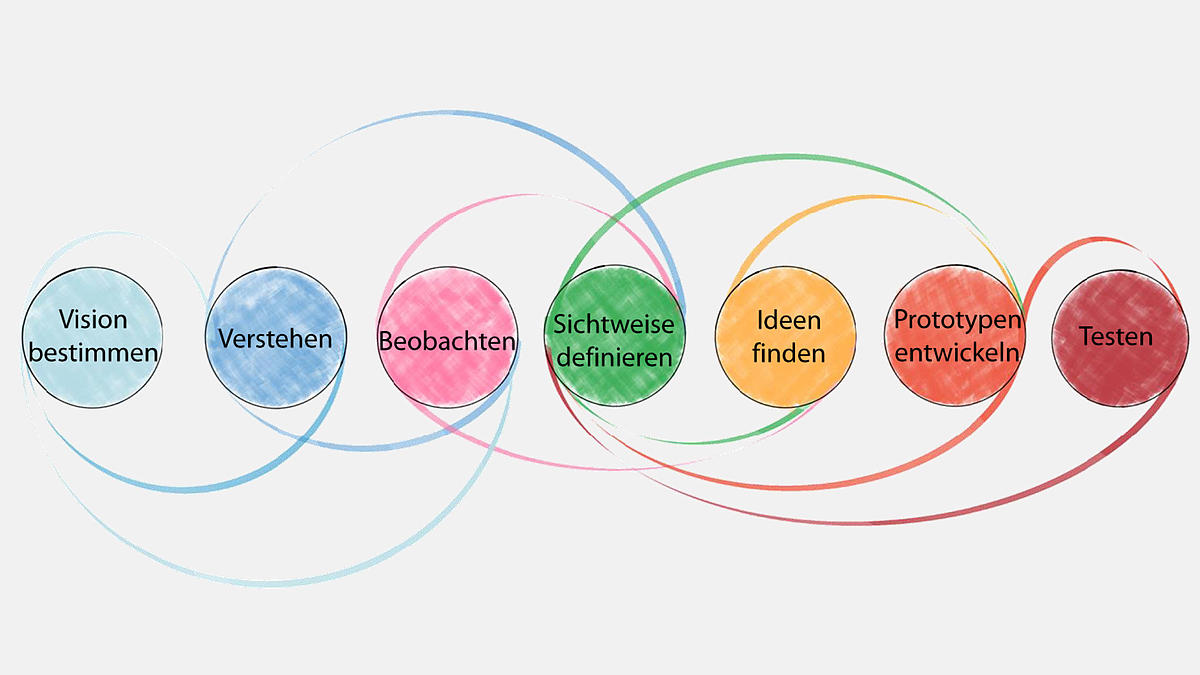We all want to be innovative. New challenges await us everywhere, in every industry, and of course in the field of services. New technologies provide new opportunities and more ways to be innovative and tackle the challenges of today, tomorrow, and possibly even the day after. Where possible we create the best possible solutions; we may even invent a solution that reinvents an entire industry, as the iPhone did for the mobile phone industry. So maybe we can invent a game-changer!
How should we go about it? How can we create the perfect conditions for inventing such a game-changer? All too often we are stuck in the processes and solutions that surround us every day. Even when we try to be creative, we mostly create evolutions of existing solutions. In innovation management, this is referred to as incremental innovation. We have now found a solution that works for us: design thinking can take us a step away from well-known paths and move us towards disruptive innovations.
Design thinking is an agile process, in which interdisciplinary teams apply various creative techniques in order to develop entirely novel solutions. Participants from all affected areas are taken out of their familiar work environment and split into teams with heterogeneous specialisations. The first step is to ignore all existing solutions and instead use several stages to focus completely on the users and target audiences, as well as their needs and expectations. Once that has been achieved, new ideas for solutions are collected and designed over several phases. This process can take between a few days and several weeks, depending on the task and size of the team, and may involve several days spent on the customer’s premises.
Traditional design thinking is based on product development in the physical sense. However, there have also been developments in terms of modified design thinking processes. Those of us involved in the DETHIS research project (Design Thinking for Industrial Services) are working with research partners, such as Jacobs University, to devise a design thinking process with which to develop services in an industry-oriented environment.
Reaching your goal with creative work techniques
For many people, design thinking workshops will be an entirely new experience in work terms, and possibly also in personal terms. At special design thinking labs, such as the D-Forge at Jacobs University, for example, every single item of furnishing can be moved freely. Groups can arrange the standing tables, sofas, beanbags, flip charts and metaplan or other bulletin walls however they like, and to suit the current situation. In dusty conference rooms that is usually not the case yet. People in such labs often make their interim results from styrofoam and tape, or act them out in role play. By the end, all the walls are often full of the fruits of creative labour: clusters of post-it notes, flip charts with diagrams, index cards covered in key terms and arranged into user stories; in some cases, road maps describing the shared goal in more detail are outlined on the windows with chalk.
Over the past two years, the DETHIS research project has introduced us to a variety of moderation techniques and methods used in design thinking. Another one-and-a-half years are left in which we can influence the research project and bring it to its conclusion. We have already been able to apply many of the design thinking phases and methods we discovered during this process in order to improve and redesign our own services. And we have even been able to run initial workshops with our customers in order to shape the informational processes of tomorrow. Maybe this would interest you as well?

